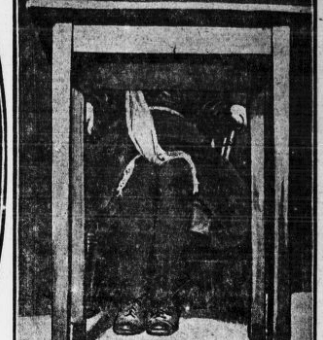
The early 20th century was an era when science and spirituality often intermingled, and newspapers teemed with accounts of ectoplasm — an alleged physical substance produced by spirits.
As an essential element of spiritualism and a bridge between the living and the deceased, ectoplasm ignited imaginations and provoked fierce debates.
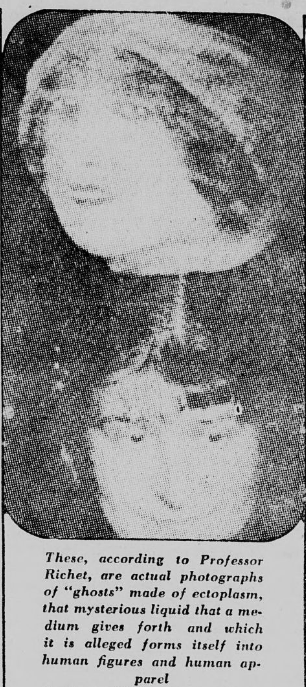
This article looks into the captivating accounts of ectoplasm in early 20th century press, and provides some of the early photographs of ectoplasm.
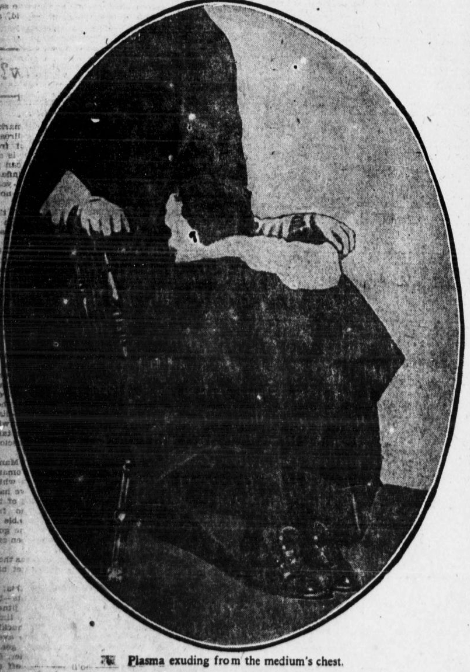
1. Ghostly Ectoplasm as Natural Phenomenon
A 1922 article in the New York Tribune suggested that ectoplasm was something quite natural:
“Ectoplasm evidently comes from the medium. It is a vaporous, pasty substance that flows from the body of certain sensitive people under certain conditions, but we don’t yet know just what those conditions are. The medium seems to be suffering acutely while the ectoplasm is leaving her, for she wrestles and twists as though being tortured and cries out in anguish. Later, when awake, the medium feels no pain and doesn’t remember anything that took place.” [New York Tribune. 02 July 1922.]
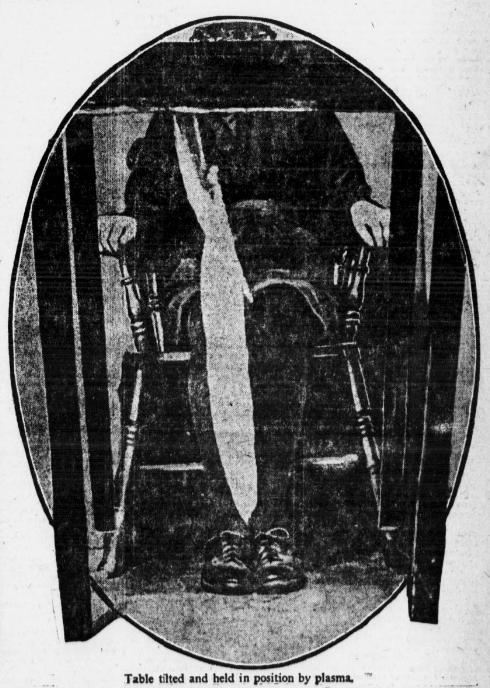
2. Sir Arthur Conan Doyle’s Belief
The New York Herald tells us that if the medium is separated from the ectoplasm, she will die:
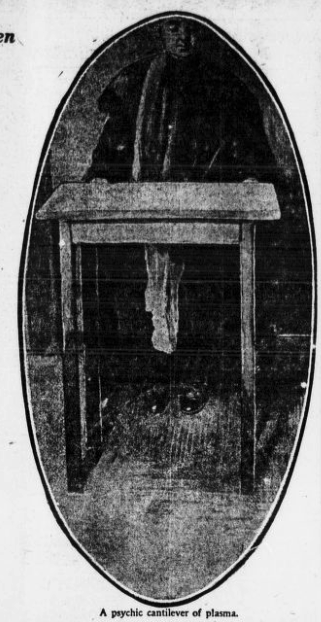
“Sir Arthur believes that the ectoplasm is really part of the body of the medium and if amputated the medium would die. A small portion of the substance has been disengaged, he said on his recent tour, and under tests had been found to consist of the same sort of chemicals and cells as are in the human body.
“To check up conclusively in their experiments the Sorbonne professors held 15 seances and they could not locate, isolate, or feel the queer putty-like mass.” [The New York herald. 09 July 1922.]

3. Great Distress
Dr. W.J. Crawford explained:
“The plasma is part of the medium’s body exteriorized in space. The muscles of the medium’s feet and ankles are, during the occurrence of the phenomena, in a state of much stress. There is no bodily movement of the foot, but there is a whirlpool of internal muscular movement. The evolution of the plasma must be accompanied by much friction between stocking and leather of shoe or boot. At nearly all seances the noise accompanying the birth pangs of the plasma is distinctly audible. With thin silk stockings the friction of plasma on the threads as it disengages itself is unmistakable.” [The Evening World. 28 April 1922.]
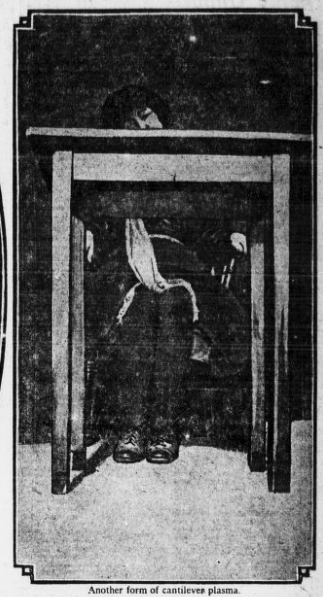
4. Parlor Science
A mention of bottling ectoplasm for medicinal purposes:
“Ectoplasm is the latest sensation of parlor science, and yet the philosophers of Prague and Cologne observed this same elusive substance. They regarded it as a clue to perpetual life if it could only be identified and rendered sufficiently durable for practical use.
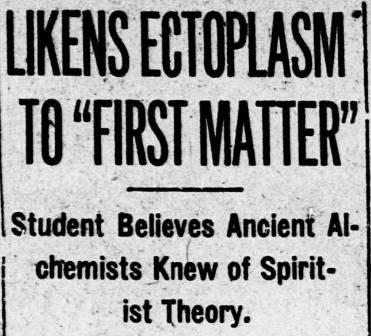
“Modern science has not tried to bottle ectoplasm as a handy prescription for rejuvenating purposes. Even if it is decided that man’s ultimate destiny is to turn into ectoplasm, most people will be willing to wait until the appointed time to change substances. The spirit world may be the state of perpetual youth which the alchemists were vaguely seeking.” [The Richmond Palladium and Sun-Telegram. 10 May 1922.]

